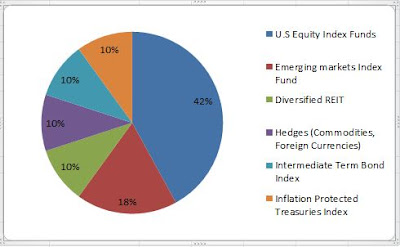Darvas's box system had been working well for him for a while when suddenly in 1957, he found that he was stopped out of most of his positions upto the point where he did not have a single position left. Perplexed, he started to wonder if his system is failing. But as it turns out, a Bear market was just around the corner !
Darvas writes:
"
But no opportunity seemed to appear. What I did not know was that we were at the end of one phase of the great bull market. It was several months before this became evident and it was declared a bear market. Half the Wall Street analysts still discuss it. They say it was merely an intermediate reaction —a temporary halt in the rising market. They all agree, however, that prices collapsed.
Of course all these opinions are expressed by hindsight— when it is too late. The advice to get out of the market was not available when one needed it.
I recall the case of Hitler when he decided to invade Stalingrad. To him it was just another Russian town to be conquered and occupied. Nobody knew while the battle of Stalingrad was being fought that it was the turning point in the war. For a very long time, few people realized it.
Even when the German armies were halfway back, it was still talked about as strategic withdrawal. It was, in fact, the end of Hitler. The Nazi war bull market ended the day Hitler attacked Stalingrad.
In the same way, I realized that it was impossible for me to assess great historical turning points in the market when they began to happen. What fascinated me, as Wall Street prices continued to fall, was the gradual realization that my system of ducking out quickly with my stop-losses made such an assessment unnecessary.
I made the joyful discovery that my method had worked much better than I had dreamed. It had automatically released me well before the bad times came. The market had changed - but I was already out of it.
The most important aspect to me was that I had absolutely no hint whatsoever that the market would slide. How could I have had any information? I was too far away all the time. I had listened to no predictions, studied no fundamentals, and heard no rumors. I had simply gotten out on the basis of the behavior of my stocks.
Later when I studied the stocks I had sold automatically, I found that they subsequently slid down very low indeed in the recession period.
Look at the following table:
| 1957
I sold at | 1958
Lowes price | 1956
Highest price |
| BALTIMORE & OHIO | 55 | 22⅝ | 45¼ |
| DAYSTROM | 42¼ | 30 | 39¾ |
| FOSTER WHEELER | 59½ | 25⅛ | 39⅛ |
| AEROQUIP | 27½ | 16⅞ | 25¾ |
| ALLIED CONTROL | 48¼ | 33½ | 46½ |
| DRESSER INDUSTRIES | 54½ | 33 | 46⅝ |
| JOY MANUFACTURING | 68 | 38 | 54½ |
| ALLEGHENY LUDLUM | 56½ | 30⅛ | 49⅜ |
When I looked at this table, I thought this: If my stop-losses had not taken me out of the market I could have lost about 50% of my investment. I would have been like a man in a cage, locked in with my holdings and missing my opportunity to make a fortune. The only way I could have escaped would have been by smashing out, taking a 50% loss, possibly ruining myself, and gravely impairing my confidence for future deals.
I could, of course, have bought these stocks and "put them away.'* This is a classic solution among people who call themselves conservative investors. But by now I regarded them as pure gamblers. How can they be non-gamblers when they stay with a stock even if it continues to drop? A non-gambler must get out when his stocks fall. They stay in with the gambler's eternal hope of the turn of a lucky card.
I thought of the people who paid 250 for new york central in 1929. If they were still holding it today it was worth about 27. Yet they would be indignant if you called them gamblers! "





